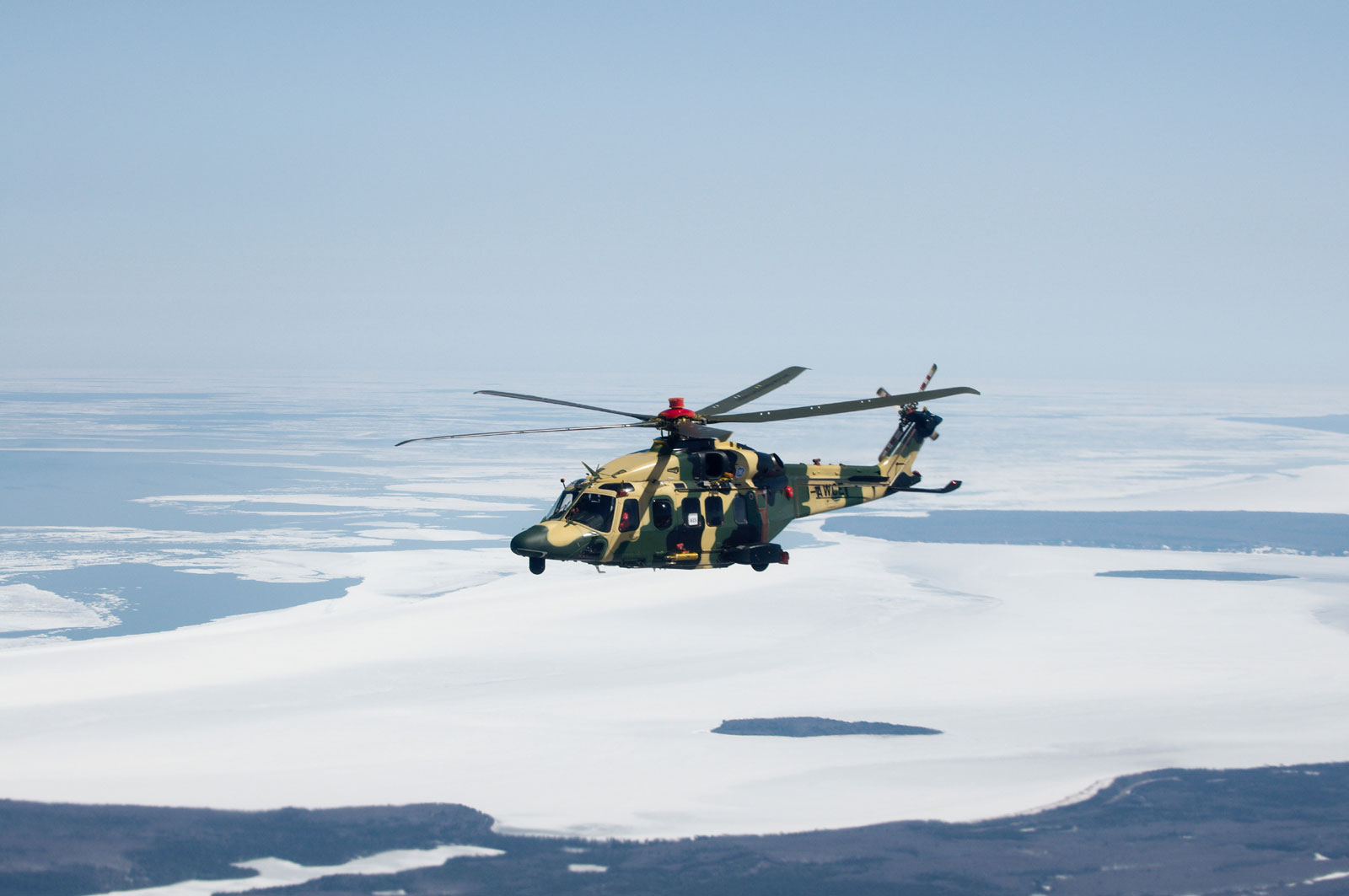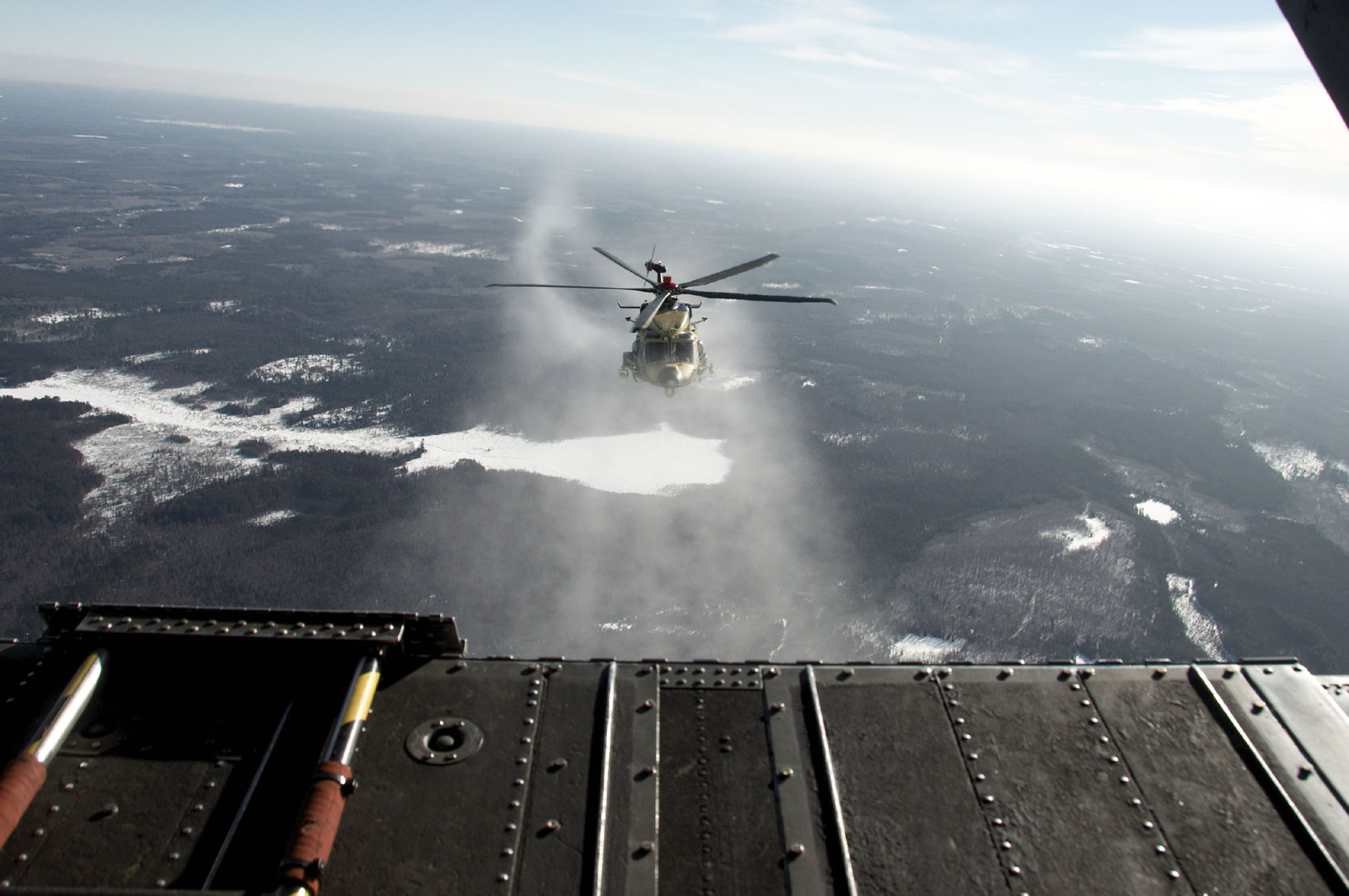The key capability goal in the rotorcraft industry is providing pilots with the ability to conduct operations safely, whenever needed, in all weather conditions. Ice accumulation has many detrimental effects on aircraft including adding parasitic weight, creating aerodynamic inefficiencies on control surfaces, affecting the performance of critical systems, and potentially impairing pilot visibility. For these reasons, snow and icing conditions are some of the harshest operating environments.
Protection in the most severe environmental conditions
In order to operate safely in icing conditions, certain critical areas require protection from the detrimental effect that ice build-up may have.
Certified in 2016 by the European Aviation Safety Agency (EASA), the Full Ice Protection System (FIPS) offered on the AW149 has been designed to provide protection against the accretion of ice during flight down to temperatures of -40°C. This capability allows operators to continue their missions safely in known icing conditions, if required; conditions which could confine other helicopters to the ground or force them to take a longer route to circumnavigate icing conditions.

The baseline AW149 is equipped with engine-air-intake anti-icing and windscreen and pitot-static heating systems, to which the FIPS adds an ice detection system, electrical power generators, and heated elements within the windshield and main and tail rotor blades.
Though manual control is available, the FIPS is fully automatic. When activated, the crew is advised via the cockpit display system upon the detection of icing conditions. The ice detection system monitors the current operating conditions, including airspeed, outside air temperature (OAT), and ice accretion rate, and provides information on the icing severity to the Ice Control Box (ICB), which then manages power distribution to the main and tail rotor blades to protect against ice buildup. Blade temperature is monitored to protect from overheating.
The FIPS has been designed to be mission installable, enabling operators to remove/install for maximum operational flexibility prior to deployment.
Proven Performance
The development programme for an ice protection system is rightly demanding and challenging. The certification programme for the AW149 FIPS involved test aircraft performing icing trials in North Europe and North America for up to three years, accumulating over 1,600 flying hours in icing conditions.
Certification activity required the aircraft to fly into both natural and artificial icing conditions, with the support of a US Army CH-47 HISS (Helicopter Icing Spray System), under the supervision and with the involvement of the appropriate certification authorities such as EASA, FAA and TCAA.


The objective of the certification process was to gather data and evidence, and to verify the aircraft flight characteristics, and system performance at the aircraft and component level.
Leonardo Helicopters is proud to be an industry leader in providing superior ice protection systems and enabling operators to safely complete their missions in the most demanding environments. Leonardo’s engineering excellence ensures complex systems maintain the already impressive operational flexibility of the AW149 without imposing component penalty factors or diminishing the aircraft’s operational weight envelope. The AW149 is our latest generation medium multi-role battlefield helicopter and provides true all-weather capability.


